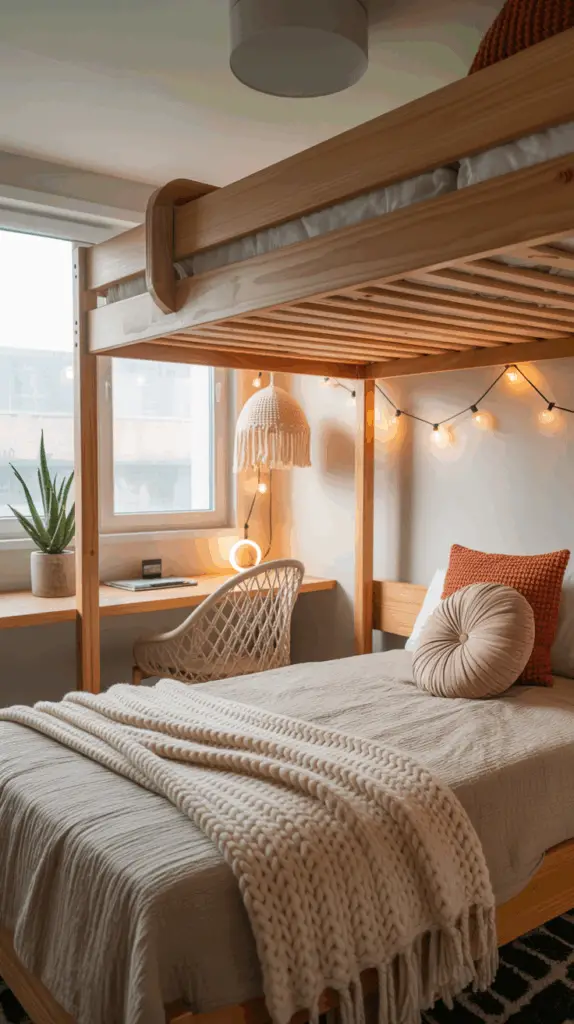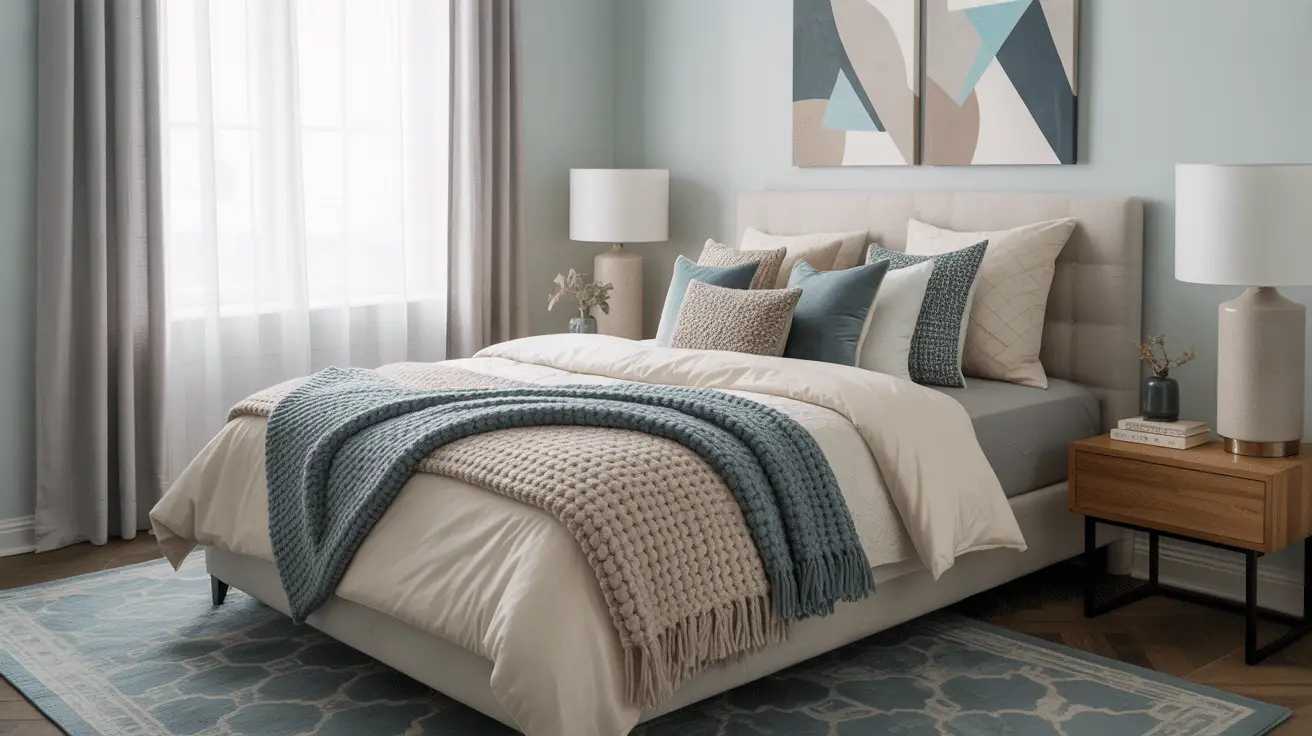Creative Teen Room Designs Every Parent Should See for Stylish and Functional Spaces
Table of Contents
Introduction
Teenagers spend more time in their rooms than any other age group at home. According to a recent survey, nearly 70% of teens consider their bedroom their favorite space for relaxing, studying, and expressing themselves. For parents, this creates a unique design challenge: balancing practicality with personality. Unlike younger children, teens want a room that reflects their individuality, but they also need it to serve as a multifunctional hub for rest, creativity, and socializing.
This is where thoughtful design makes all the difference. A well-planned teen room can strike the right balance between style and function, blending comfort with creativity. By choosing the right colors, furniture, layouts, and decor, parents can help their teens create a space they’ll love without breaking the flow of the home’s overall design.
In this guide, we’ll explore fresh and creative teen room design ideas that every parent should see. You’ll learn how to choose the right color palette, maximize storage in small spaces, create inspiring study zones, and integrate personality-driven decor. Each section is filled with practical tips, examples, and easy-to-follow breakdowns that make the process manageable and rewarding.
Whether you’re giving your teen’s room a full makeover or making small upgrades, this article will inspire you to create a stylish and functional space that grows with them.
Choosing the Right Color Palette for Teens
Color is one of the most powerful tools in room design. For teens, the palette should reflect both maturity and individuality. While younger kids often gravitate toward bright primary colors, teenagers usually prefer deeper, more sophisticated shades paired with playful accents.
Neutral tones like soft grays, beiges, or whites provide a timeless foundation. These can be layered with pops of vibrant color such as teal, coral, mustard yellow, or even pastel tones to keep the space fresh and lively. A two-tone wall treatment, like half-painted walls or geometric shapes, is a popular way to add visual interest without overwhelming the room.
Parents should also consider the psychology of colors. Blues and greens encourage calm and focus, perfect for study areas. Warmer shades like peach or terracotta create coziness, while bold accents like black or navy lend sophistication.
Color Palette Ideas for Teen Rooms:
| Foundation Color | Accent Shade | Effect Created |
| Soft Gray | Teal | Balanced and energetic |
| White | Coral | Fresh and lively |
| Beige | Mustard Yellow | Warm and cheerful |
| Navy Blue | Blush Pink | Modern yet cozy |
| Charcoal | Mint Green | Trendy and calming |
By blending timeless bases with youthful pops, you ensure the room feels age-appropriate but adaptable as your teen’s tastes evolve.
Smart Furniture Choices for Function and Style
Furniture in a teen’s room must do double duty. Beyond sleeping, the room is often used for studying, relaxing, and entertaining friends. Smart furniture choices maximize space while reflecting personality.
A bed with built-in storage drawers or a loft bed with a desk underneath is ideal for smaller rooms. Desks should be large enough to accommodate schoolwork but stylish enough to complement the overall design. Pairing a desk with a comfortable ergonomic chair ensures long-term functionality.
Accent furniture is where creativity shines. A beanbag chair or hanging chair adds fun, while sleek shelving units help display personal items like books, trophies, or decor. Multi-purpose furniture, like ottomans with hidden storage, keeps clutter at bay.
Furniture Solutions for Teen Rooms:
| Furniture Piece | Design Option | Benefit |
| Bed | Loft bed with desk | Saves space and creates study zone |
| Desk | Modern wooden desk | Combines function and style |
| Chair | Ergonomic swivel chair | Comfort for long study sessions |
| Accent Seating | Hanging chair | Fun and relaxing |
| Storage Ottoman | Fabric with lid | Hidden storage + seating |
Mixing functional staples with playful elements ensures the room feels both practical and inspiring.

Maximizing Storage in Small Teen Rooms
Teens often accumulate clothes, gadgets, and hobby items, so smart storage is essential. Small rooms, in particular, demand creative solutions that blend seamlessly into the design.
Closet organizers with adjustable shelves and hanging rods help maximize wardrobe space. Under-bed storage bins or drawers are perfect for seasonal items. Wall-mounted shelving keeps floors open while displaying decor. Pegboards or hooks can organize everything from jewelry to headphones, making them both functional and decorative.
Custom-built solutions also work wonders. A built-in wardrobe or wall-to-wall shelving provides ample storage while keeping the look streamlined. The goal is to reduce clutter while giving teens easy access to their belongings.
Storage Solutions at a Glance:
| Storage Option | Best Use | Design Benefit |
| Under-Bed Drawers | Clothes, bedding | Saves floor space |
| Wall Shelves | Books, decor | Adds vertical interest |
| Pegboards | Accessories, tools | Functional and creative |
| Closet Organizers | Clothing | Maximizes small closets |
| Storage Ottoman | Shoes, blankets | Dual purpose |
The right storage plan allows teens to keep their rooms tidy without sacrificing style, helping them maintain a balance between personality and practicality.
Creating Inspiring Study and Work Zones
Every teen room needs a designated study area that encourages focus and productivity. The challenge lies in designing a space that feels inviting rather than clinical.
Start with a desk positioned near natural light if possible. A task lamp with adjustable brightness ensures usability in the evenings. The desk surface should have enough space for a laptop, books, and supplies. Personalizing the space with a corkboard, mood board, or floating shelves gives teens ownership of their study zone.
Ergonomics matter too. A supportive chair helps avoid fatigue, and a clutter-free workspace reduces distractions. Incorporating storage solutions like drawers or baskets keeps supplies organized.
Study Zone Essentials:
| Item | Ideal Feature | Why It Matters |
| Desk | Spacious surface | Room for books and laptop |
| Chair | Adjustable and ergonomic | Supports long study sessions |
| Lighting | Desk lamp + natural light | Prevents eye strain |
| Organization | Floating shelves, drawers | Keeps clutter away |
| Personalization | Mood board | Inspires creativity |
By creating a study space that balances function with self-expression, parents encourage teens to stay motivated and organized.
Personalized Decor That Reflects Teen Style
Teen rooms are extensions of identity, so decor should reflect their passions and creativity. Personalization can come through wall art, themed bedding, or unique accessories.
Gallery walls with posters, framed prints, or photography create a focal point while showcasing interests. Accent rugs in bold patterns or playful textures add depth. Lighting can also become decorative—think neon signs with motivational quotes or string lights framing the bed.
Encourage your teen to choose a few statement pieces that reflect who they are. For example, a budding musician may display guitars on wall mounts, while an artist might frame their own sketches. The goal is to create a space that feels like theirs without overwhelming the overall design.
Decor Inspiration Table:
| Decor Element | Style Idea | Effect |
| Wall Art | Gallery of posters/prints | Adds personality |
| Rugs | Bold geometric design | Anchors the room |
| Lighting | Neon sign or fairy lights | Fun, youthful glow |
| Display | Hobby-specific items | Personal storytelling |
| Bedding | Themed or custom | Adds instant impact |
Thoughtful personalization ensures the room grows with the teen while staying timeless enough for future updates.
Balancing Social Space with Privacy
Teen rooms often serve as gathering spots for friends, but they also need to remain restful sanctuaries. The design must balance social energy with private retreat.
Consider flexible seating, like a futon sofa or floor cushions, that accommodates friends without permanently occupying space. A small side table or rolling cart can hold snacks, games, or supplies during hangouts but easily tuck away afterward.
At the same time, privacy remains essential. Use curtains, room dividers, or even creative zoning with rugs to define areas for studying, sleeping, and socializing. This allows the teen to shift between modes without feeling crowded.
Balancing Act Design Tips:
| Need | Design Solution | Benefit |
| Socializing | Futon sofa | Doubles as bed for guests |
| Privacy | Room divider curtain | Separates zones |
| Entertainment | Rolling cart | Mobile and flexible |
| Relaxation | Beanbag corner | Personal retreat |
By blending social-friendly design with private corners, parents can help teens feel in control of their environment while enjoying both independence and connection.
Conclusion
Designing a teen’s bedroom is more than just a decorating project—it’s about creating a space that supports growth, individuality, and function. From choosing the right color palette to maximizing storage, setting up study zones, and adding personalized touches, every detail helps shape a room that feels both stylish and practical.
A thoughtful design allows teens to feel proud of their space, while parents can rest assured knowing it’s functional and adaptable for years to come. With the right balance of creativity and structure, these rooms become more than bedrooms—they transform into hubs of self-expression, learning, and comfort.

